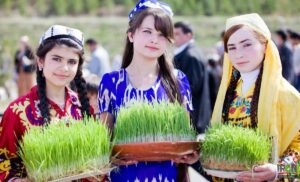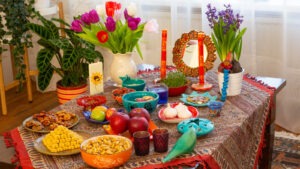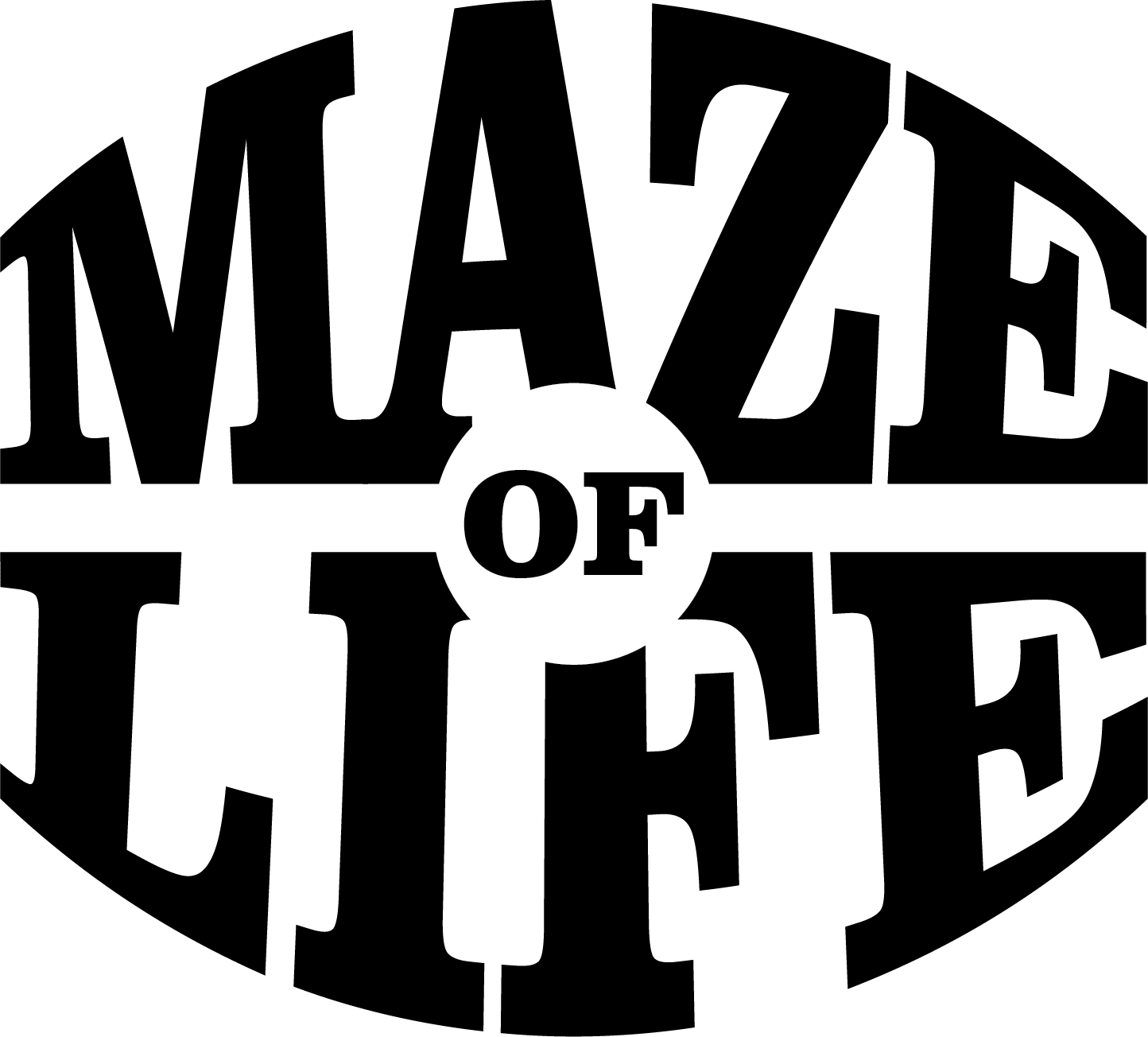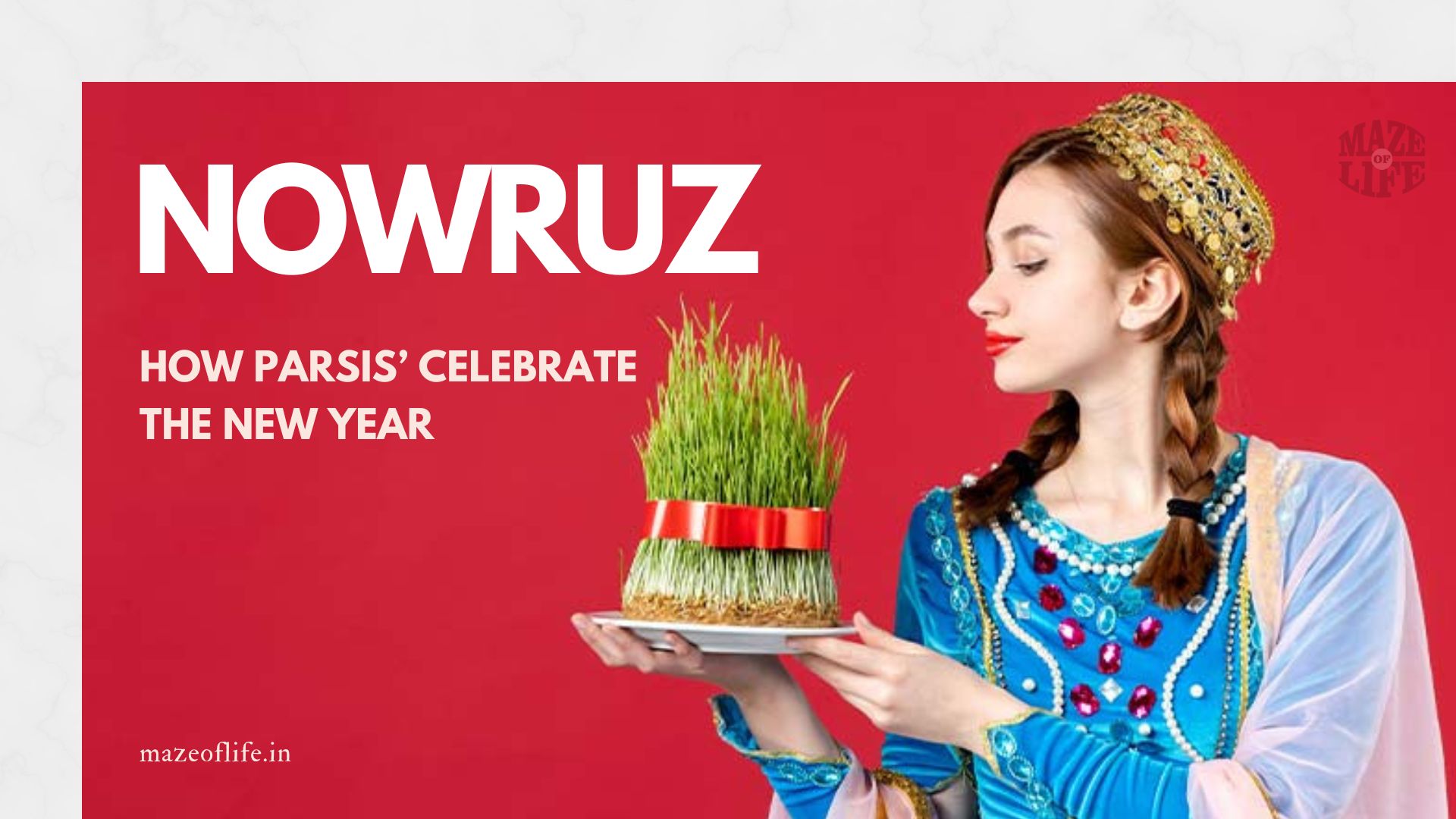Each year, when winter is replaced by spring, Parsis (Persians) around the globe observe Nowruz, the Parsi New Year. It is not a calendar date; it is a festival of renewal, hope, and reunion. Nowruz occurs on about March 20-21, when the day and night are equal, and it has been celebrated for more than 3,000 years. From ancient Zoroastrian origins, Navroz continues to be an integral part of Parsi culture, symbolising the beginning of spring and the beginning of a new year.

The Significance of Nowruz in Parsi Culture
Nowruz is not just a festival; it is a part of Parsi tradition. UNESCO has acknowledged it as an intangible cultural heritage of Humanity. It has survived the decline and rise of empires, evolved with the passage of time, and maintained its very core intact. For Parsis, Nowruz is family time, a time for introspection, and a time of new beginnings.
How Parsis prepare for Nowruz
Preparation for Navroz happens weeks before the celebration. Spring cleaning, also known as “khaneh tekani,” is one of the most significant traditions. Households thoroughly sweep, mop, and clean to bring freshness and good energy to their homes. They believe good luck for the upcoming year accompanies a clean residence. They buy new clothes as well and start cooking special delicacies, causing people to develop an excitement waiting for the occasion to arrive.

The Symbolic Haft-Seen Table
One of the central features of Nowruz is the Haft-Seen table, where seven symbolic items that start with the letter “S” are included:
- Sabzeh (sprouted lentils or wheat): Symbolizes new life and growth.
- Samanu (sweet pudding): Represents power and strength.
- Senjed (dried oleaster fruit): Represents love and wisdom.
- Seer (garlic): Stands for health and safety.
- Seeb (apple): Symbols beauty and health.
- Somaq (sumac): Symbolizing the morning and patience
- Serkeh (vinegar): Age and wisdom.
In addition to these objects, Parsis also place a mirror (symbolizing self-reflection), decorative eggs (for fertility), goldfish (symbolizing life and movement), and a poetry book or religious book on the table.
Navroz Traditions and Celebrations
One of the most fun Nowruz customs is Chaharshanbe Suri, which takes place on the night of the Wednesday leading up to Nowruz. Individuals come outside and jump over fires, shouting, “Give me your warmth and take away my sickness!” This is a ritual that represents cleansing and removing evil from one’s life prior to the new year.
Families also come together to celebrate a special feast on Nowruz, which includes dishes such as Sabzi Polo Mahi (rice and herb and fish) and Kuku Sabzi (herb omelet). They also pay social visits to meet up with family and friends as part of the celebration, cementing relationships and exchanging good wishes for the coming year.
Sizdah Bedar: The Finality of Navroz
The celebrations last 13 days, ending with Sizdah Bedar. This is the day people go out for picnics and relaxation. It is thought by many that staying home on this day is bad luck, so Parsis enjoy the outdoors, nice food, and get rid of Sabzeh from their Haft-Seen table into flowing water to show that they are letting go of negative forces.
Navroz Outside Iran
Even though Navroz originated in Persia, it is celebrated in the majority of countries, including:
- Afghanistan: Celebrated with Buzkashi (a national horseback sport) and sumptuous feasts.
- Central Asia: In Uzbekistan, Kazakhstan, and Turkmenistan, Nowruz is a festive celebration with public events, music, and dance.
- Kurdish Regions: The festival features New Year fires and folk performances.
Navroz is being celebrated by India and Pakistan’s Parsis by making offerings of prayers and delicious food.
Balkans and Caucasus: Each of Azerbaijan, Albania, and Georgia has unique Navroz celebrations.
The Significance of Nowruz
Today Nowruz in this busy world today reminds us to slow down, respect tradition, and value the people we love. Governments and global organisations now celebrate and value this festival, maintaining its spirit of peace and harmony for everyone. Conclusion Nowruz is not just a New Year’s celebration—it is a unique tradition that brings Parsi communities and families together in joy, gratitude, and hope for the future. With its rich rituals and profound symbolism, Nowruz continues to move people everywhere, reminding us all of the wonder of beginning again.
Navroz is more than just a New Year celebration—it is a cherished tradition that brings Parsi families and communities together in joy, gratitude, and hope for the future. With its rich customs and profound symbolism, Nowruz continues to inspire people across the globe, reminding us all of the beauty of renewal and fresh beginnings. Happy Nowruz!
Nowruz Wishes
As Nowruz brings a fresh start, here are some warm wishes to share with loved ones:
- “Wishing you a Navroz filled with happiness, prosperity, and new opportunities!”
- “May this Nowruz bring you success, joy, and good health throughout the year.”
- “Let the spirit of Navroz fill your heart with hope and your home with laughter. Happy Nowruz!”
- “May the new year bless you with abundance and countless cherished moments. Happy Nowruz!”
- “Navroz Mubarak! May this year be as bright and promising as the first day of spring.”
So what do you think about Nowruz and how are you celebrating it, please share in the comment box. For more such stories visit : mazeoflife.in


